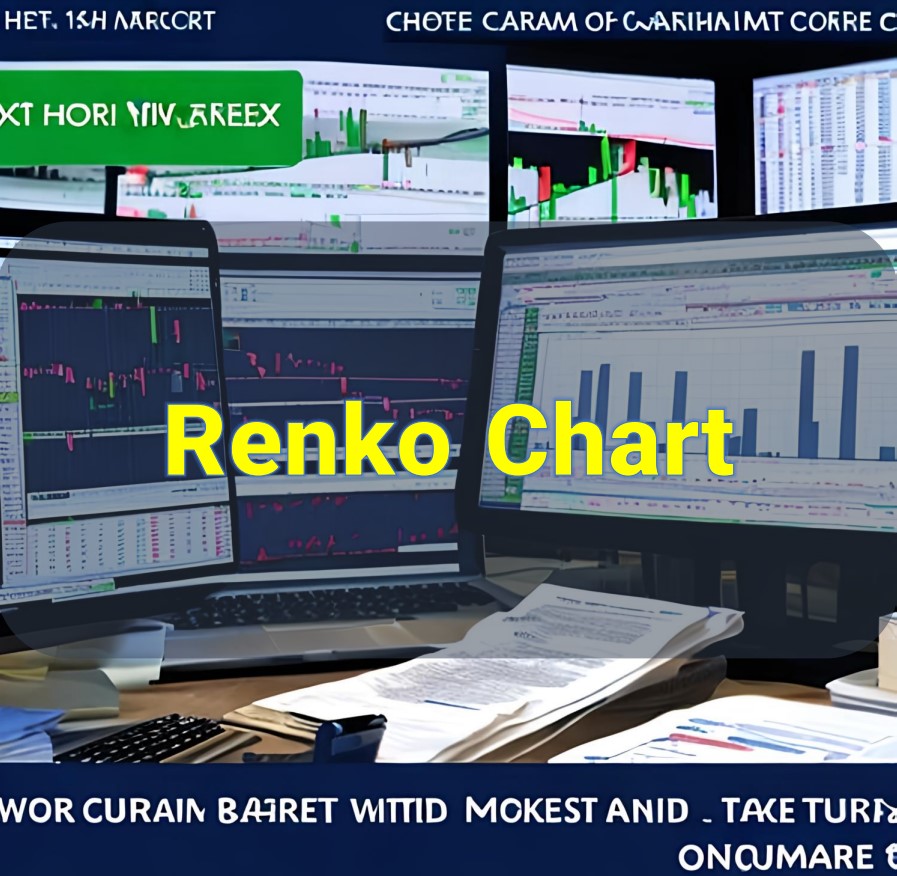lot in forex – Foreign exchange (Forex) trading is a vast and dynamic market that offers numerous opportunities for individuals to participate in global currency trading. To navigate the Forex market successfully, traders must have a solid understanding of various concepts, including the concept of a “lot.” In this article, we will delve into the world of Forex lots, their significance, and how they impact trading outcomes.
Introduction to Forex Lots
In Forex trading, a lot refers to a standardized unit of measurement used to quantify the volume of a trade. It represents the size of the trade and determines the potential profit or loss. Understanding different lot sizes is crucial for managing risk and optimizing trading strategies.
Standard Lot
The standard lot is the most commonly used lot size in Forex trading. It represents 100,000 units of the base currency. For example, if you are trading the EUR/USD currency pair, a standard lot would be equivalent to 100,000 euros.
Mini Lot
A mini lot is one-tenth the size of a standard lot. It represents 10,000 units of the base currency. Mini lots are often preferred by beginners or traders with smaller capital, as they allow for more flexibility and reduced risk compared to standard lots.
Micro Lot
A micro lot is one-tenth the size of a mini lot and represents 1,000 units of the base currency. Traders who have limited capital or wish to trade with lower risk often opt for micro lots. Micro lots enable traders to participate in the Forex market with smaller trade sizes.
Nano Lot
A nano lot is the smallest lot size available in Forex trading. It represents 100 units of the base currency. Nano lots are primarily used by traders who want to test their trading strategies or those with extremely limited capital. It allows for precise risk management and fine-tuning of trading skills.
Choosing the Right Lot Size
Selecting the appropriate lot size is a critical decision for Forex traders. It depends on several factors, including risk tolerance, account size, and trading strategy. Traders with larger accounts and higher risk tolerance may opt for standard or mini lots, while those with limited capital may prefer micro or nano lots.
Determining the right lot size involves considering your risk tolerance. Assess how much you are comfortable risking on a single trade. If you have a larger account and can afford to take on more risk, you may consider trading with standard or mini lots. Standard lots represent 100,000 units of the base currency, while mini lots are one-tenth the size of a standard lot, representing 10,000 units of the base currency.
For traders with limited capital or a lower risk appetite, micro lots or nano lots may be more suitable. Micro lots are one-tenth the size of a mini lot and represent 1,000 units of the base currency. Nano lots, on the other hand, are the smallest lot size available and represent 100 units of the base currency. These smaller lot sizes allow for precise risk management and can be beneficial for those who want to test their trading strategies or have limited funds.
It’s important to align your lot size with your trading strategy. Consider the frequency of your trades and the potential risk associated with each trade. If you plan to take many trades, using smaller lot sizes like micro or nano lots can help manage risk more effectively. On the other hand, if you have a long-term trading strategy with fewer trades, standard or mini lots may be more appropriate.
Ultimately, the right lot size is a personal decision based on your risk tolerance, account size, and trading strategy. Take the time to evaluate these factors and choose a lot size that suits your individual circumstances. Remember, proper risk management is crucial in Forex trading, and selecting the right lot size is an important step towards managing risk effectively.
Risk Management and Lot Sizes
Proper risk management is paramount in Forex trading. Lot sizes play a significant role in managing risk effectively. By choosing the right lot size based on account balance and risk tolerance, traders can control their potential losses and protect their capital.
One of the key aspects of risk management is determining an appropriate lot size for each trade. Lot sizes directly affect the amount of money at stake in a trade, as well as the potential profit or loss. A larger lot size means a higher exposure to risk, while a smaller lot size reduces the risk.
To manage risk effectively, it’s essential to assess your risk tolerance and account balance. Consider how much you are willing to risk on a single trade in relation to your overall account size. Traders with a higher risk tolerance may choose larger lot sizes, while those with a lower risk appetite may opt for smaller lot sizes.
It’s important to set stop-loss orders to limit potential losses. A stop-loss order is a predetermined level at which a trade will be automatically closed if the market moves against the trader. By using stop-loss orders, traders can control their maximum loss on a trade and protect their capital.
Additionally, diversifying your trades across different currency pairs and using proper position sizing can also contribute to effective risk management. By avoiding overexposure to a single currency pair or market, you can reduce the impact of adverse market movements.
Remember that risk management is an ongoing process. As market conditions change, it’s important to reassess your risk tolerance and adjust your lot sizes accordingly. Regularly reviewing and updating your risk management strategies will help you adapt to market dynamics and protect your trading capital.
In summary, risk management is crucial in Forex trading, and lot sizes are a key component of effective risk management. By choosing the right lot size based on your risk tolerance and account balance, setting appropriate stop-loss orders, and diversifying your trades, you can manage risk more effectively and increase your chances of long-term success.
Lot Size Calculation
Calculating the lot size is an important step in Forex trading. It involves determining the appropriate position size for a trade based on several factors, including risk percentage, account balance, and the stop-loss level.
To calculate the lot size, you need to consider your risk tolerance and the percentage of your account balance that you are willing to risk on a single trade. It is generally recommended to risk a small percentage of your account balance, such as 1% to 2%, to protect your capital.
Once you have determined your risk percentage, you can calculate the dollar amount that you are willing to risk on the trade. For example, if you have a $10,000 account balance and you decide to risk 2% ($200) on a trade, this will be the maximum amount you are willing to lose.
The next step is to determine the stop-loss level for the trade. The stop-loss is the price level at which you will exit the trade if the market moves against you. It is important to set a stop-loss level that is appropriate for your trading strategy and the market conditions.
Once you have determined the stop-loss level, you can calculate the lot size using the following formula:
Lot Size = Risk Amount / (Stop-Loss in Pips x Pip Value)
The pip value represents the monetary value of a single pip movement in the currency pair you are trading. It varies depending on the currency pair and the account currency. You can refer to your trading platform or consult a pip value calculator to determine the pip value.
By plugging in the values into the formula, you can calculate the lot size that aligns with your risk tolerance and account balance. Keep in mind that different brokers may have variations in their lot size calculation methods, so it’s essential to understand the specific calculations used by your broker.
Using proper lot size calculation helps you manage risk effectively and ensure that each trade is proportionate to your account size and risk tolerance. It allows you to control potential losses and protect your trading capital.
Leverage and Lot Sizes
Leverage is a powerful tool in Forex trading that allows traders to control larger positions with a smaller amount of capital. It can significantly impact both potential profits and losses. Understanding how leverage relates to lot sizes is crucial for effective risk management.
When trading with leverage, you are essentially borrowing funds from your broker to amplify your trading position. The leverage ratio determines the amount of leverage you can utilize. For example, a leverage ratio of 1:100 means that for every $1 in your trading account, you can control a position of $100.
The relationship between leverage and lot sizes is intertwined. Higher leverage allows you to trade larger lot sizes with a smaller amount of capital. For instance, if you have a $1,000 trading account and use a leverage ratio of 1:100, you can control a position size of $100,000 (one standard lot) in the Forex market.
It’s important to note that while leverage magnifies potential profits, it also amplifies losses. Even a small adverse movement in the market can lead to substantial losses when using high leverage. Therefore, it’s crucial to exercise caution and implement proper risk management strategies when trading with leverage.
To manage risk effectively when using leverage, it’s advisable to consider the potential impact on your trading account. Higher leverage allows for larger lot sizes, but it also increases risk exposure. Traders should carefully assess their risk tolerance and consider the potential drawdowns on their account when choosing the appropriate lot size and leverage ratio.
It’s essential to strike a balance between maximizing profit potential and managing risk. While higher leverage can provide opportunities for greater returns, it’s crucial to remain mindful of the potential downside risks. Traders should aim to find a leverage ratio and lot size that align with their risk tolerance, trading strategy, and account size.
Proper risk management practices, including setting stop-loss orders, regularly reviewing and adjusting leverage and lot sizes, and diversifying your trading portfolio, are essential when utilizing leverage. By incorporating these risk management techniques, you can navigate the Forex market more effectively and protect your trading capital.
In summary, leverage and lot sizes are intertwined concepts in Forex trading. Leverage allows traders to control larger positions with a smaller amount of capital, while lot sizes determine the volume of a trade. When using leverage, it’s crucial to implement proper risk management strategies and find a balance between profit potential and risk exposure.
Advantages of Different Lot Sizes
Different lot sizes offer distinct advantages for Forex traders, providing flexibility and catering to various trading preferences and capital levels. Let’s explore the advantages of each lot size:
Standard Lots
Standard lots represent 100,000 units of the base currency. They offer significant profit potential for traders with larger capital. The advantages of trading with standard lots include:
1. Greater Profit Potential: Standard lots allow traders to capture larger price movements, potentially resulting in substantial profits.
2. Suitable for Experienced Traders: Traders with ample experience and higher risk tolerance often prefer standard lots due to their larger position sizes.
Mini Lots
Mini lots are one-tenth the size of standard lots, representing 10,000 units of the base currency. They offer increased flexibility for traders with smaller capital. The advantages of trading with mini lots include:
1. Reduced Risk Exposure: Trading with mini lots allows for smaller position sizes, reducing the potential risk per trade compared to standard lots.
2. Flexibility for Small Accounts: Traders with limited capital can participate in Forex trading using mini lots, gaining exposure to the market while managing risk effectively.
Micro Lots
Micro lots are one-tenth the size of mini lots and represent 1,000 units of the base currency. They provide precise risk management and accommodate traders with limited capital. The advantages of trading with micro lots include:
1. Fine-tuned Risk Management: Micro lots allow for precise control of risk exposure, enabling traders to implement specific risk management strategies.
2. Ideal for Beginners: Traders who are new to Forex trading or have limited capital can gain valuable experience and confidence by trading with micro lots.
Nano Lots
Nano lots are the smallest lot size available, representing 100 units of the base currency. They offer an opportunity for traders to test strategies and trade with minimal capital. The advantages of trading with nano lots include:
1. Testing and Experimentation: Nano lots are ideal for testing new trading strategies or fine-tuning existing ones without significant financial risk.
2. Limited Capital Requirement: Traders with extremely limited capital can participate in Forex trading using nano lots, gaining exposure to the market with minimal investment.
It’s important to choose the lot size that aligns with your risk tolerance, capital availability, and trading strategy. Consider your objectives, account size, and comfort level when deciding which lot size is most suitable for your trading style.
By utilizing the advantages offered by different lot sizes, traders can tailor their approach to match their individual circumstances and increase their chances of success in the Forex market.
The Role of Lot Sizes in Trading Strategies
Lot sizes are an integral part of trading strategies. They influence position sizing, risk management, and overall trading outcomes. Traders must align their lot sizes with their trading goals and strategies to optimize their chances of success in the Forex market.
Trading Examples Using Different Lot Sizes
Let’s explore some trading examples to better understand the impact of different lot sizes. Please note that these examples are for illustrative purposes only and do not constitute financial advice.
1. Standard Lot Example: If you enter a trade with a standard lot on the EUR/USD currency pair and the exchange rate moves in your favor by 100 pips, you would earn a profit of $1,000.
2. Mini Lot Example: Trading with a mini lot on the same currency pair and a 100-pip favorable move would result in a profit of $100.
3. Micro Lot Example: With a micro lot and the same favorable move, the profit would amount to $10.
4. Nano Lot Example: Trading with a nano lot and a 100-pip favorable move would yield a profit of $1.
Lot Sizes and Profit/Loss Calculation
Profit and loss calculation in Forex trading is influenced by the lot size. The larger the lot size, the greater the potential profit or loss. Traders should be mindful of the lot size they choose to trade to manage risk and optimize profitability.
The Importance of Lot Sizes in Forex Trading
Lot sizes are essential in Forex trading, as they directly impact risk exposure, potential profits, and overall trading outcomes. By selecting the appropriate lot size based on individual circumstances and trading goals, traders can enhance their trading strategies and improve long-term profitability.
Conclusion
Understanding the concept of lot sizes is crucial for success in Forex trading. The choice of lot size influences risk management, profit potential, and overall trading strategies. By aligning lot sizes with individual circumstances and trading goals, traders can navigate the Forex market more effectively and improve their chances of achieving consistent profits.
FAQs
1. What is the significance of lot sizes in Forex trading?
Lot sizes determine the volume of a trade, impacting risk exposure, profit potential, and overall trading outcomes.
2. Can I change the lot size during a trade?
Lot sizes can be adjusted between trades, but it’s important to carefully consider the implications and manage risk accordingly.
3. Which lot size should I choose as a beginner?
Beginners often start with mini or micro lots to manage risk while gaining experience in Forex trading.
4. How do I calculate the appropriate lot size for a trade?
Lot size calculation involves considering the risk percentage, account balance, and stop-loss level. Online calculators are available to assist with this calculation.
5. Is it necessary to use leverage with lot sizes?
Leverage is optional but can amplify both profits and losses. Traders should exercise caution and use leverage responsibly.
In this article, we explored the concept of Forex lots, including standard, mini, micro, and nano lots. We discussed the importance of selecting the right lot size, risk management considerations, and the role of lot sizes in trading strategies. Understanding lot sizes is vital for Forex traders looking to optimize their trading outcomes and achieve long-term success in the dynamic world of currency trading.







